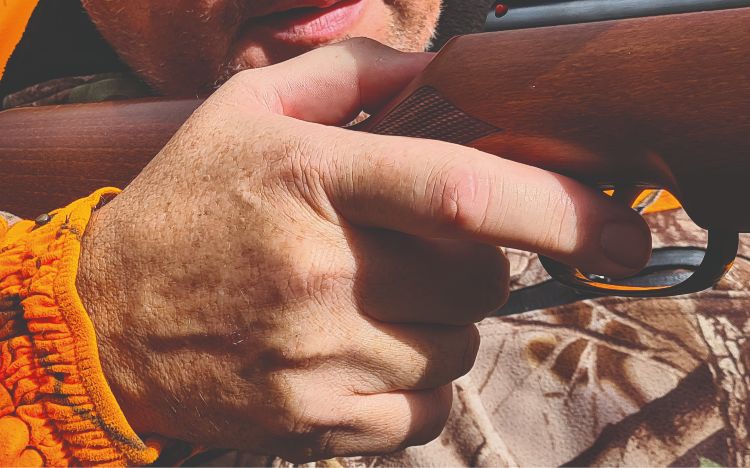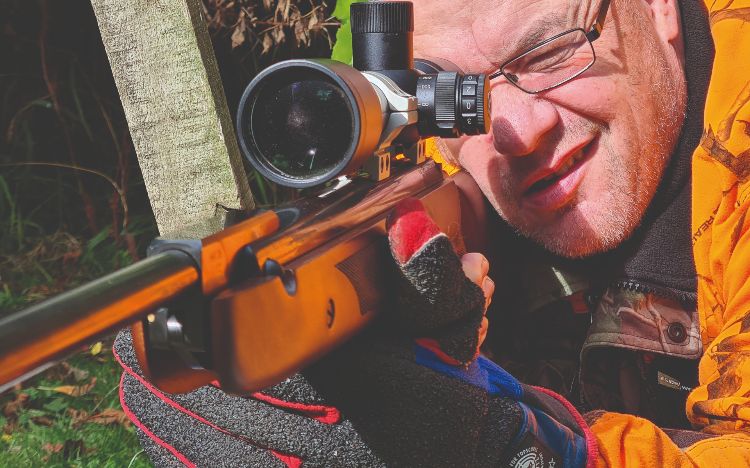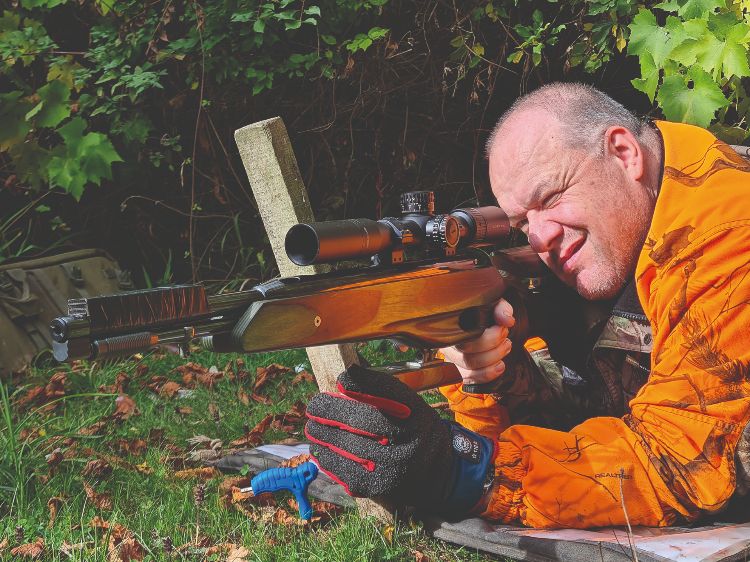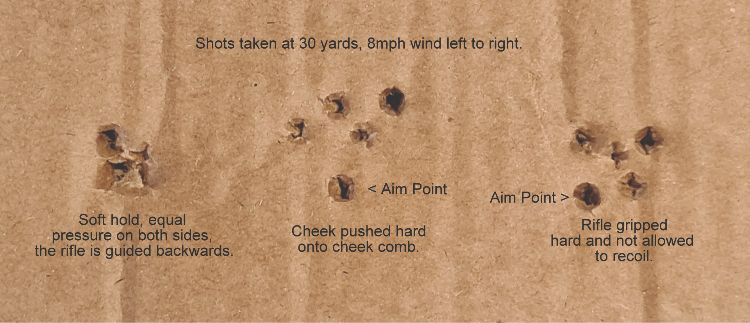Hello, everyone. I should have written this piece last month, but I put it on hold so that I could answer a reader’s letter. For those of you who want to know, John asked whether he should buy a PCP or a springer as his first rifle and the two that he was looking at were the HW98 or the S400. Well, I am glad to tell you that he ignored my advice – always a good idea – decided to buy the springer and he is now the proud owner of an amazing HW98. This is a great rifle and it will serve him well, but I have always stated that starting with a springer is hard work. I would recommend starting with a PCP because you will get better results faster, but I hope the article was helpful, not just to John, but also to everyone who shoots.
 SO MANY QUESTIONS!
SO MANY QUESTIONS!
The questions this month are, Does hold really matter?, Does holding a rifle tightly affect the trajectory?, Does resting the stock against a peg cause zero shift? Basically, what affects the accuracy of a rifle, and how should you hold a spring gun to make it as accurate as possible?
Let’s get started with an HW95. Now, as I have stated many times, my match TX has a heavy stock, heavy scope, half a pound of lead attached to the barrel, 22mm piston and a match trigger, so you can rest the butt of the rifle on the deck and not worry too much about hold, but an out-of-the box TX is a different beast.
The thing to remember is Newton’s third law – every action has an equal and opposite reaction – so take a springer like the HW95, which is a great gun, but the stock is light and the barrel is long. So, when you pull the trigger, the spring starts to decompress, and this shoves the fairly heavy piston down the tube to create the air to push the pellet down the long barrel. As this heavy piston and spring start pushing forward, the equal amount of force is pushing the rifle backward into the shoulder and because the stock is light, you feel this shove and the body’s natural instinct is to push back, or brace.
Now, assuming that you are not going to start messing with the rifle and modifying it, you need to start to think about the cycle of the shot, and this is everything from pulling the trigger to the spring expanding within the gun, to the pellet travelling down the barrel and out of the crown – and you need to take control of this cycle.
 GUIDE THE RIFLE
GUIDE THE RIFLE
The first thing is to learn about and adjust the trigger. You don’t want to yank on the trigger, trying to get the gun to fire, so setting the first and second stages, weight and bite point, is essential. There is a great video from shootingatdawn on YouTube showing you how to set up a Rekord Trigger. My trigger is light with a short first stage, and a ‘snap’ when I squeeze it.
For me, the last thing I want is any movement in my hand when pulling on the trigger because this will cause the rifle to move and you will lose accuracy. I want to think about the rifle firing, and for the rifle then to fire with virtually no movement of my hand. As I pull the trigger, I then focus on the target and my eye will not move from the scope until the full cycle has finished. As the trigger is pulled and I feel the rifle start to move, my thoughts are not to hold the rifle, but to guide it.
I know that the rifle will be recoiling backwards, but I also know that it may want to twist, so I’m trying to guide the rifle backwards – not stop it, not restrict it, but guide it.
 POINTS OF CONTACT
POINTS OF CONTACT
My cheek is also touching the rifle and this is a point of contact that is often overlooked. On a PCP, it is common to push your head down onto the cheek comb to get the perfect cheek weld. Sometimes, shooters will force their face onto the comb and use the cheek bone, instead of the fleshy part of the face, but by pushing your face hard onto the comb, you are putting pressure onto the back of the rifle and when it starts to recoil backwards, this linear motion, mixed with the pressure from the cheek, will force the butt of the rifle down and push the barrel up.
When you are lying at the peg and holding the rifle, think about your points of contact; the right hand wrapped around the trigger; the left hand holding the fore end of the stock and holding the rifle against the peg; the cheek on the comb, and the butt pad in the shoulder. These are four points of contact that can all affect the rifle.
 PRACTICE SESSION
PRACTICE SESSION
So, this is what I want you to do: Place a piece of paper out at 30 yards and hold the rifle lightly. Just touch the comb with your cheek, cradle the fore end of the rifle in your left hand, and place the butt of the rifle in the fleshiest part of your shoulder – preferably wear a thick jacket. Then with your trigger hand, match the pressure that your left hand is putting on the rifle, squeeze the trigger using just the tip of your finger and take up the first stage, and hold on the second stage. Then breathe, and with the smallest of movements go past the first stage and fire the rifle. Watch to see where the pellet lands and then do it again and again. Once you are getting a good group around the size of a 20p piece, I want you to mess it up.
Start another group and this time, push your head hard on the comb and see what happens. You will probably see the pellet hit high. Once you have seen this, go back to the way you were shooting before and start getting good groups. Then grip the rifle harder and harder and watch the group get worse and then return. Then snatch the trigger or don’t follow through. Once you have the ability to shoot well, start learning what will happen when you mess it up. This way you will not only learn the rifle, but also what not to do. Shooting a springer is about muscle memory and you need to learn the feeling of what is right and what is not right. This way, if you are in a situation and you can feel yourself gripping the gun too hard, you will recognise it.
A PARTNERSHIP
Basically, to learn how to shoot your rifle well, you first have to shoot it badly. I would love to be able to sit here and tell you exactly what to do, but all rifles are different. I have two TX200HCs – one loves to be shot off the deck, and one does not. There is no rule.
I can tell you, though, that for a spring gun, the most important thing is the trigger, so get it as light and sharp as you are happy with, providing that remains safe. A well-tuned trigger is so important and will make the gun much easier to shoot.
Shooting a springer is a partnership between you and the rifle. A gun may choose to cooperate with you, it may choose to make your life a misery, but get it right and you will have many happy years together. Get it wrong, though, and try to force it to your will, and the springer will rebel and you will have a bad time.